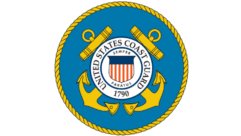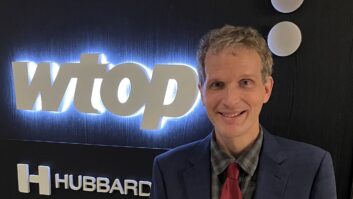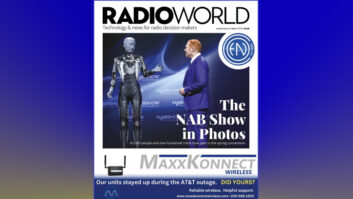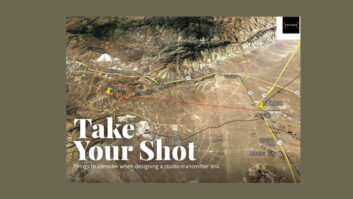
More Dashboard This is one in a series of articles about radio’s role and future in the evolving automobile dashboard. To read more, visit https://www.radioworld.com/dashboard. Automakers are looking to please and lure the younger buyers who eventually will supplant older consumers. Major car companies are making deals with wireless carriers to bring connectivity into the car. Couple these trends with a plethora of choices that enable consumers to experience entertainment in the car, and radio should be worried, industry observers say.
That’s because the number of “connected cars” on the road — those with big-screen infotainment systems — is expected to increase 200 percent, from 0.9 million vehicles in 2013 to 2.7 million in the U.S. this year, SNL Kagan predicts. Senior Research Analyst Justin Nielson believes the figure will rise to 10.3 million cars in 2015 and 51.3 million in 2017. By then, he believes, connected cars will make up 15 to 20 percent of vehicles on U.S. roads. Each automaker offers a variety of features in the center stack, from basic systems with features like Bluetooth phone pairing and navigation, to mid-range systems, including features such as touch screens with a few media selections and partnered content, including radio, and the ability to make calls using voice command.
High-end systems layer in more apps, including Internet radio, partnered with a search engine and multiple local content options, according to SNL Kagan. Some of the higher-end systems support text messaging and email from the dash, including text-to-speech reading and speech-to-text message dictation.

Ford’s Scott Burnell says, “While AM/FM will always be in the vehicle, the question is where?” Photo by Leslie Stimson Scott Burnell, global lead, business development and partner management for Ford, characterizes cellphone use in the car as “a big opportunity,” both for the automaker and content partners like radio. There are approximately 1 billion smartphones in use; that is expected to double by 2015, according to Burnell.
THE BUTTON
Indeed, Ford predicts by 2017, 80 percent or more of vehicles here and in Western Europe “will be connected in some way,” he said at the recent NAB Show. The year 2017 is also when experts predict millennials will outspend baby boomers for the first time.
“One of the things you should be scared about” — and something that should persuade radio stations owners to adopt so-called “hybrid radio,” he believes — is the level of customization automakers offer to customers now, and what they plan to offer, on these big-screen infotainment systems such as Ford Sync. “We’ve got the button in the car,” he said, and, “while AM/FM will always be in the vehicle, the question is where?”
Customization means that instead of relying on a hardwired button, an owner can choose FM as the first preset, for example. Drivers can arrange their big-screen apps and other functions the way they want to.
Some industry leaders believe that radio runs the risk of getting lost among in the digital dash as consumer choices increase. “If we don’t fight for space in the dash, it’s going to get real crowded,” said NAB Executive Vice President/Chief Technology Officer Kevin Gage, endorsing what he characterizes as “the radio platform” of HD Radio, NextRadio and streaming.
Burnell said that buyers or potential buyers are “already in a Ford vehicle, and I want to give them every opportunity to stay there and have Pandora, as well AM/FM and other entertainment options on a level playing field.” Using an app in the car, customers can access data like GPS, speed, oil life — as well as an AM/FM tuner. It’s possible to “use a really good antenna and start building an experience,” he said.
Burnell says Ford has received “a lot of pushback” on the connected car concept from broadcasters. “They think if they still have a tower, they don’t have to worry about this. Just you having ‘sticks’ is not going to do it anymore,” he said. “Every automaker in the next 18 months will have some level of connectivity” in the vehicle.

Broadcasters will see more marketing to promote consumer awareness of the NextRadio app, says Emmis’ Paul Brenner. Photo by Jim Peck To that end, NextRadio app supporters urge all broadcasters to adopt the FM cellphone app.
Eric Williams, product manager for Sprint, says the NextRadio app has really taken off, saying it provides “more robust options for our music customers.” Since launching on two Sprint handsets in January, the NextRadio smartphone app is now pre-loaded on 13 models. The app was on some 285,000 handsets as of April.
Prepaid growth is “phenomenal” across all devices, proving “people aren’t worried about over-spending their data plan,” said Williams.
Sprint preloads the app onto a smartphone. Then the user clicks on the icon and is taken to the correct place to listen to an FM station.
RAMP UP
Emmis Chair, President and CEO Jeff Smulyan said the response from consumers to the NextRadio app has been “great.” At the behest of NAB, Emmis is the company that created the app.
“Now we’re at the next level, talking with NAB. You’ll see the industry and NAB ramp this up.”
Smulyan told Radio World all the major commercial radio ownership groups are on board and so too, are NPR and American Public Media. We reported in March that CBS Radio, Cox and Entercom are implementing the advanced interactive data features of NextRadio; now, Clear Channel and Cumulus are too, according to Smulyan.
Emmis Senior Vice President/Chief Technology Officer Paul Brenner said broadcasters will see more marketing to promote consumer awareness of the app.
SNL Kagan is keeping an eye on online radio and the connected car. “NextRadio is something we’re looking at and could potentially be a [revenue] growth driver,” said Nielson. He predicts radio will continue to see stable annual growth of 1 to 2 percent regardless, but potentially more if the industry can leverage digital audio and associated mobile advertising, depending on how many connected auto receivers and smartphones come to market, he added.
“Radio has to play defense and offense in terms of mobile expansion and on the connected car,” said Nielson.
Proponents continue to urge broadcasters to go beyond the free logo and use more of the interactive backchannel capabilities of the FM cellphone app. While some 35 percent of FMs in the U.S. are participating in NextRadio using TagStation, only some 3 percent of those are providing interactivity, according to Emmis.
Brenner told Radio World it is time for stations to go beyond the free logo and implement the interactive features of the NextRadio app. He characterized 2017 as a “generational pivot,” referring to the rise of millennial spending, and urged broadcasters not to wait.
Given the fragmented state of the digital dash, Gage asked, what should radio owners do? Burnell answered by echoing Brenner’s sentiment, saying “Forget the ‘how’ and work on the ‘what.’ Take the decision out of it.” That’s like asking “Why would I go FM if I’ve got AM?’ or ‘Why would I go to the Web’?” he asked rhetorically.
“That puts you behind the competition.” Burnell advised broadcasters to focus on “content, talent, advertising and the connection to your listeners and the ‘how’ will disappear.”
Brenner also suggested that stations trim typical spotloads of 12 to 14 minutes per hour; he said millennials want to hear fewer commercials.
How can radio companies better position themselves in the evolving dashboard? Write to [email protected] Letter to the Editor in the subject field.












